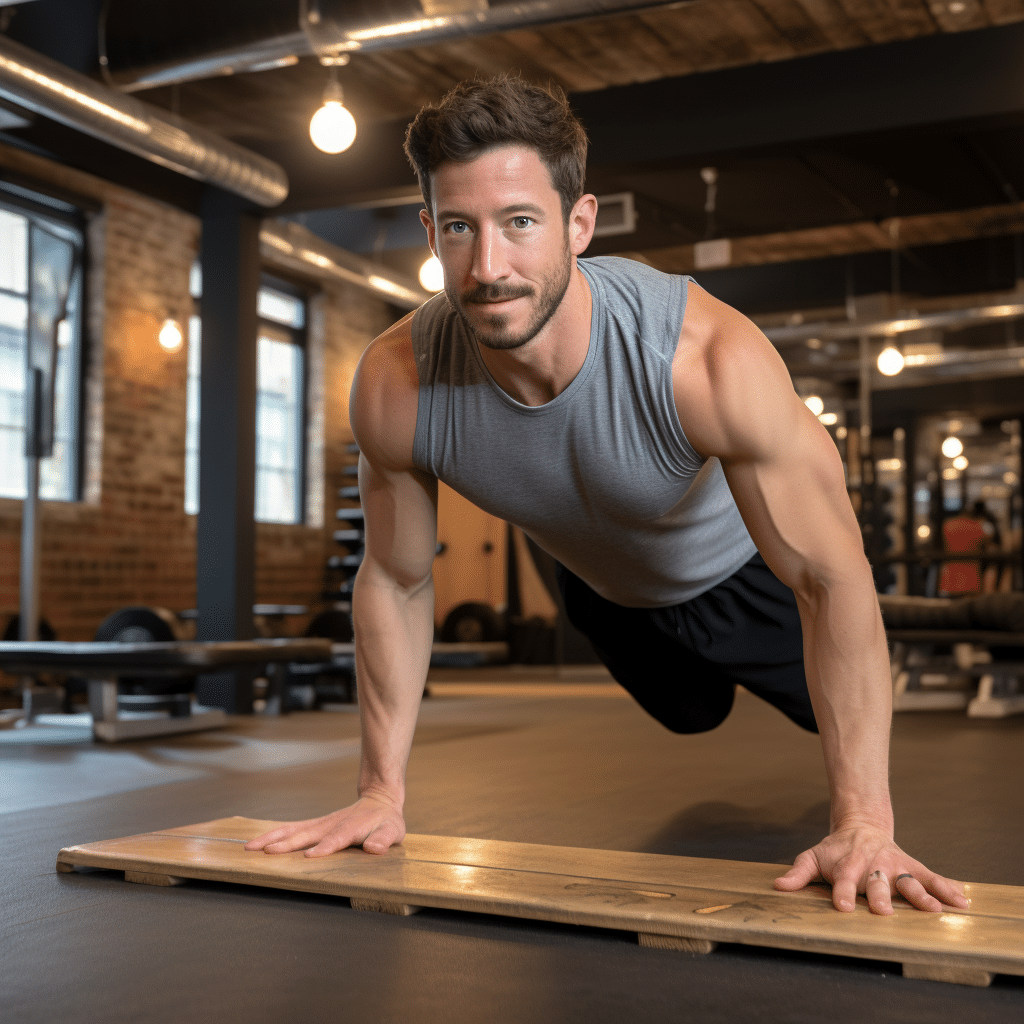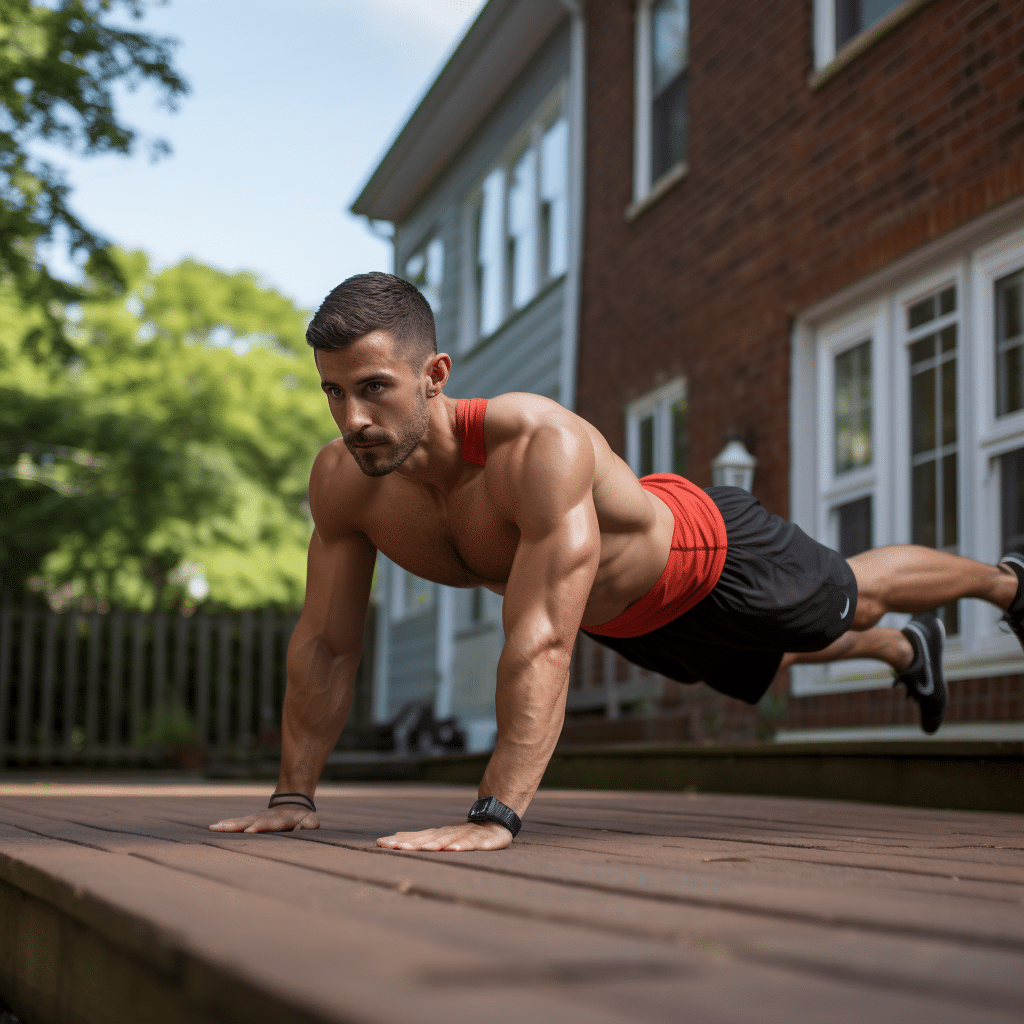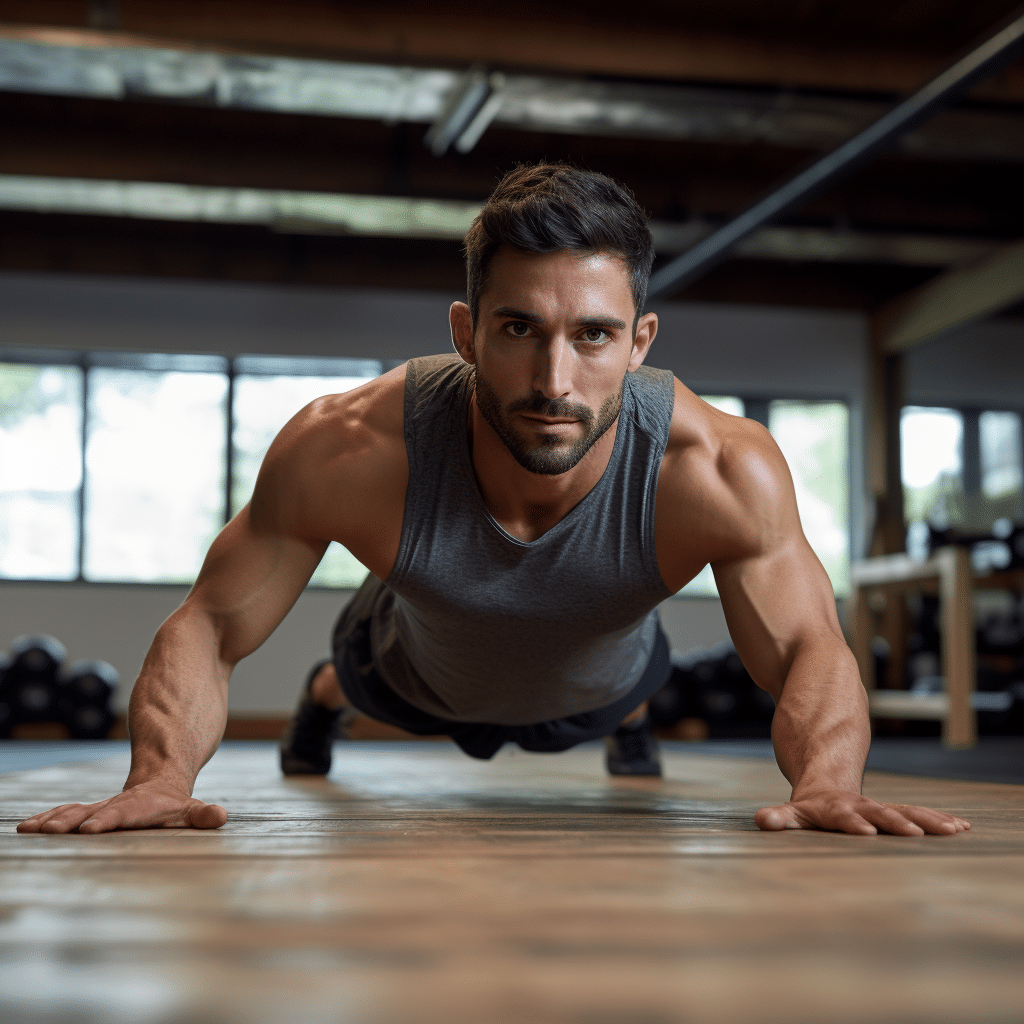Introduction
People have always wanted a strong, well-defined chest. Common exercises like push-ups and bench presses have been used to build chest muscles for a long time. Planks are known for strengthening the core, but they have also become popular for their potential in working the chest. Planks are a bodyweight exercise where you hold a push-up position with your arms extended and your body in a straight line. They strengthen the core, improve stability, and promote good posture. Planks focus on the abdominal muscles, obliques, and lower back, so they’re great for overall core development. Some people believe that planks can also work the chest muscles to some extent by engaging them to stabilize the body during the exercise.
To better understand the relationship between planks development, it’s essential to consider the anatomy of the chest muscles. The pectoral muscles, consisting of the pectoralis major and pectoralis minor, are primarily responsible for shoulder flexion, adduction, and horizontal adduction. While planks involve isometric contractions and primarily target the core, they also engage the shoulder girdle, which includes the pectoral muscles to a certain extent. The mechanics behind planks, their potential impact on chest development, and whether incorporating them into your fitness routine can contribute to a more balanced and sculpted chest.
Is planking good for your chest?
Planks can help improve your posture
By strengthening your back, chest, shoulders, neck, and abs, this exercise makes it easier to keep your shoulders back and your lower back in a neutral position while sitting or standing — two vital components of good posture.
To understand how planking affects the chest, it’s important to know what it is. Planking involves holding a push-up position while keeping the body straight. It focuses on the abdominal and lower back muscles. Planks do involve the chest muscles to some extent, particularly the pectoralis major which stabilizes the shoulders during the exercise. This is more noticeable in plank variations that require lifting one arm or leg. While planks are primarily an isometric exercise, they indirectly stimulate the chest muscles due to the stabilization required to maintain proper body alignment. This chest engagement is more significant in plank variations like the side plank.
Do planks give you a bigger chest?
There’s no question that push-ups and planks sculpt the chest, shoulders, and core. Most trainers would even consider these moves among their favorites. On the bright side, neither requires pressing weight overhead, which can be an issue for those with shoulder restrictions.
Planking is a highly popular bodyweight exercise that focuses on strengthening the core, improving stability, and enhancing overall posture. It involves maintaining a push-up position with the arms extended and the body forming a straight line from head to heels. The primary goal of planks is to engage the abdominal muscles, including the rectus abdominis, transverse abdominis, and obliques, as well as the muscles of the lower back. This makes it an excellent choice for core development.
While planks are primarily designed for core training, they do involve the pectoral muscles to some extent. The pectoralis major, the primary chest muscle, comes into play to stabilize the shoulder girdle during planking. This involvement becomes more pronounced when performing variations of planks, such as the side plank or the plank with shoulder taps. In these variations, the chest muscles are actively engaged to support the body’s weight and maintain proper form.
Planks, while beneficial for overall core strength and stability, are not an optimal choice for individuals aiming to achieve a significantly bigger chest. Chest development typically requires exercises that place a more direct and substantial load on the pectoral muscles. Bench presses, incline presses, dumbbell flyes, and other chest-specific exercises are better choices for hypertrophy in the chest area.
What muscles do planks work?
The core muscles targeted when doing a plank exercise are the rectus abdominus (front abs), oblique muscles (side abs), transverse abdominis (runs from the belly button up to the rib cage) and the glutes. Training your core regularly will keep the spine aligned and maintain a strong, healthy back.
The rectus abdominis, often referred to as the “six-pack” muscles, is the primary target of planks. It runs vertically along the front of the abdomen and is responsible for flexing the spine. This deep-lying muscle is crucial for stabilizing the spine and maintaining proper posture. Planks effectively engage the transverse abdominis.
Planks work the internal and external oblique muscles, which are responsible for twisting and rotating the trunk. Strengthening the obliques contributes to better torso stability and a well-defined waistline. These muscles run along the length of the spine and are engaged during planks to support and stability to the back.
The gluteus maximus, minimus, and medius are engaged during planks to maintain hip stability. Strong glutes help with posture and overall lower body strength. The muscles responsible for flexing the hips, known as the hip flexors, are worked during the plank exercise. Engaging the hip flexors can help improve hip mobility and flexibility.

Is 1 minute plank a day enough?
Try performing the plank for a minimum of one minute at a time. Start by doing 1 plank a day to slowly 3 to 10 a day to reap the maximum benefits. Then, slowly also try side planks which can help improve your flexibility.
Performing a 1-minute plank daily can certainly help improve your core strength and endurance. It’s a great starting point, especially for beginners. Planks engage multiple core muscles, including the rectus abdominis, transverse abdominis, and obliques, and holding a plank for a minute challenges these muscles effectively. Over time, this can lead to enhanced core stability, better posture, and reduced risk of lower back pain.
While a 1-minute plank is a decent starting point, to maximize the benefits of planking, it’s important to progress and incorporate variations into your routine. As your core strength improves, you can increase the duration of your plank, add side planks, or try other plank variations to keep challenging your muscles. This progression is essential for long-term gains in core strength and overall fitness.
Planks primarily target the core muscles, but they also engage other muscle groups to varying degrees, such as the shoulders, arms, and legs. While a 1-minute plank can be effective for core development, it may not be sufficient for a comprehensive full-body workout. To achieve balanced muscular development and overall fitness, it’s to incorporate a variety of exercises that target different muscle groups.
Does plank reduce chest size?
Plank exercise reduces breast size – If you want your big size breast to reduce to some extent and get the perfectly sized bust-line, then add a plank to your workout program.
Planks are a type of exercise that involves holding a position without moving your joints. They mainly work your core muscles and not your chest muscles. Doing planks alone won’t reduce your chest size. To lose weight and reduce chest size, you need to burn more calories than you consume. Chest-specific exercises, like flyes or weightlifting routines, are better for reducing chest size. These exercises directly target the chest muscles and can be effective when combined with a proper diet and caloric deficit.
Do planks bulk your waist?
Planks are key cornerstone in anyone’s program, and well see why in a second – but at the top of the list is that the plank works your abdominal muscles in a way like to other and can shrink the circumference of your waist like no other exercise.
Planks are primarily designed to strengthen the core, which includes muscles like the rectus abdominis (the “six-pack” muscles), transverse abdominis, and obliques. These exercises engage the core muscles, helping to improve overall core strength and stability. However, it’s while planks can make the core stronger, they do not significantly increase muscle size. Instead, they promote muscle endurance and improved muscular engagement.
The width of your waist is primarily determined by your genetics, bone structure, and the distribution of fat in your body. While exercise can influence the appearance and strength of your core, it is unlikely to significantly alter your natural waist size or structure.
Planks are an excellent exercise for promoting balanced core development, which is vital for overall health and fitness. Strong obliques help with stability and core control, and they are crucial for various functional movements and sports activities. A well-rounded and strong core can improve your athletic performance, prevent lower back pain, and enhance your posture.
Do planks work your whole body?
In a plank, your hamstrings help with hip extension, keeping a straight line through your body from your trunk to your legs. The plank is considered a full body workout. In particular, it targets your abdominal and lower back muscles.
Planks target the front abdominal muscles, often referred to as the “six-pack.” The deepest layer of abdominal muscles, the transverse abdominis, is heavily involved in planks and contributes to core stability. The internal and external obliques on the sides of the abdomen are engaged during planks, enhancing trunk stability and rotation control.
These muscles run along the spine and play a crucial role in maintaining back stability, an essential aspect of plank exercises. The deltoid muscles, located in the shoulders, are actively involved in maintaining proper form and stability during plank variations.
Planks engage the triceps, which are the muscles on the back of your upper arm. They help maintain elbow extension and overall arm stability. The muscles in your forearms, including the flexors and extensors, are essential for supporting your body weight when planking on your forearms. The quadriceps, located on the front of the thighs, help maintain a straight body position during the plank exercise.
Is it hard to lose chest fat?
Losing fat from your chest area can seem daunting, but the right combination of diet, activity, and exercise can make it possible. A doctor can also give you personalized advice on best options. Targeting chest fat can be challenging.
Genetics play a significant role in determining how and where your body stores fat. Some individuals may have a genetic predisposition to store fat in the chest area. Unfortunately, you cannot control or change your genetic makeup. This is one reason why losing chest fat can be challenging, as it may be one of the last areas to respond to weight loss efforts.
Hormonal imbalances can contribute to the accumulation of fat in the chest area. Conditions like gynecomastia, characterized by the enlargement of male breast tissue, are associated with hormonal fluctuations and may require medical intervention.
To target chest fat, you need to reduce your overall body fat percentage. Losing fat from a specific area, such as the chest, is often more challenging than shedding weight from the entire body. The body tends to burn fat from various areas simultaneously, and the chest area may be one of the last to slim down.

Conclusion
Planks work the chest and we’ve studied how they affect chest muscles. Planks aren’t mainly for the chest, but they do use the chest muscles as stabilizers. If you want to target your chest, it depends on your fitness goals and how you use planks in your routine. Planks are great for strengthening your core and improving posture by challenging the muscles that maintain a stable spine and pelvis.
The isometric contractions involved in holding a plank position engage the rectus abdominis, transverse abdominis, obliques, and the muscles of the lower back, which collectively contribute to a strong and stable core. During the plank variations the pectoral muscles, specifically the pectoralis major, are involved to a lesser degree in order to maintain proper body alignment. This chest engagement occurs due to the need to stabilize the shoulder girdle, especially when performing plank variations that require lifting one arm or leg.
To build chest muscles, do exercises like bench presses, push-ups, and flyes. These target the chest muscles directly. Planks can also help by strengthening your core, which is important for doing compound chest exercises effectively.

